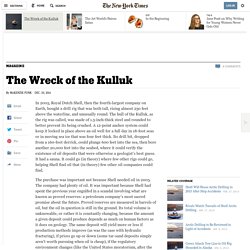

Overview of gas production in Turkmenistan and future outlook. Among the Central Asian countries, Turkmenistan has the largest natural gas reserves and the world’s sixth largest reserves that amount 13,7 tcm.

In 2015, Turkmenistan expects a total 48 bcm of natural gas exports comparing to 2014 figures of 45,1 bcm. At the same time, the country forecasted a 9 percent increase in natural gas production to 83,8 bcm in 2015. That means that Turkmenistan would have 35,8 bcm of natural gas for local consumption. That amount of gas might be too high for Turkmenistan’s domestic consumption, because the country burned roughly 22,3 bcm in 2013. Therefore, the margin between the production, consumption and export demonstrates that Turkmenistan has a significant potential to increase the export of its energy source. To export natural gas to different markets, Turkmenistan needs to improve its pipeline infrastructure. Earthprints: Andasol solar power station. On a barren, sun-baked plateau in southern Spain, row upon row of gleaming mirrors form one of the world's biggest solar power plants and harness the sun's power even after dark.

Near the town of Guadix, where summer temperatures often top 40 degrees Celsius, the main sound at the site is a whirring of motors to keep the mirrors - mounted on giant steel frames - tracking the sun as the Earth turns. There is little sign of life here, at an altitude of 1,100 meters near the snow-capped Sierra Nevada range. Some hardy red and yellow flowers grow around the fringes, a few pigeons flap past and workers say that the odd fox lopes by at night. The environmental benefits of clean energy are judged to outweigh the scar to the landscape from the mirrors, which are visible from space. The land is infertile, there is little wildlife and few people live nearby. Wind energy provides 8% of Europe's electricity.
A county divided: is Lancashire ready for its fracking revolution? Robert Sanderson, a strapping dairy farmer, is standing in his muddy yard.

He is in tears. Sanderson’s family and his Lancashire farm have, thanks to geological chance, ended up on the frontline of fracking in the UK. “I’ve never wanted to do anything but farm,” says Sanderson, part of the third generation of his family to farm near Kirkham. “All my young lad dreams about is farming. Last night he said to me, ‘When I grow up I want to have the biggest tractor in the world’.
Sanderson is intensely proud of his prize-winning cattle, but fears pollution from planned shale gas exploration nearby will harm his children and poison his 400 acres. “When my uncle Harry and aunty Christine bought the farm, I was the first to congratulate them,” Sanderson says. Nationally David Cameron and the government have declared they are “going all out” for fracking, hoping to emulate the shale gas revolution in the US. “I am excited we may finally get going again,” he says.
Kate Phillips sur Twitter : "@guardianeco: US emissions may be down but its coal exports are up #ASgeogKEGS #energy" The Economist sur Twitter : "Shell’s offer for BG shows how the energy business is changing. The-wreck-of-the-kulluk. Photo In 2005, Royal Dutch Shell, then the fourth-largest company on Earth, bought a drill rig that was both tall, rising almost 250 feet above the waterline, and unusually round.

The hull of the Kulluk, as the rig was called, was made of 1.5-inch-thick steel and rounded to better prevent its being crushed. A 12-point anchor system could keep it locked in place above an oil well for a full day in 18-foot seas or in moving sea ice that was four feet thick. Its drill bit, dropped from a 160-foot derrick, could plunge 600 feet into the sea, then bore another 20,000 feet into the seabed, where it could verify the existence of oil deposits that were otherwise a geologist’s best guess. It had a sauna. The purchase was important not because Shell needed oil in 2005. Despite their unreality, proved reserves define the total worldview of an oil company. For all its short-term growth, Shell still had to show investors that its long-term future was as bright as it once looked on paper. “North American energy independence by 2020″
Guest post by David Middleton GOP presidential candidate Mitt Romney recently released an outline of his plan to achieve “North American energy independence” by 2020.

While the white paper (1) is short on specific details, it does contain quite a few good ideas and some supporting documentation. For anyone interested in a business plan approach to energy policy, it’s well worth reading. Rather than focus on the details of the plan, I thought it would be an interesting exercise to see if “North American energy independence by 2020″ was even technically possible. If it’s not technically possible, then it’s not really relevant whether or not it would be economically advisable or politically achievable. So, without any further prologue, I’m going to jump right into some numbers. Can we “get there from here”? Figure 1. The UTRR-Fed are concentrated in areas close to existing exploration and exploitation infrastructure.
Figure 2. Canada expects to double its oil production by 2030 (3).